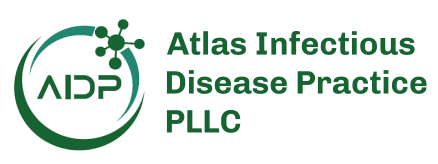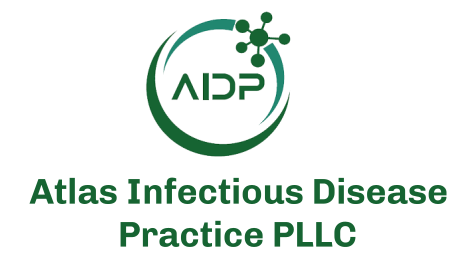Andreas Boehmler, PhD
Image credit: Beckman Coulter Life Sciences

Despite major advances in the detection and treatment of HIV/AIDS, the disease remains a global health crisis. According to the World Health Organization (WHO), 630,000 people died from HIV-related causes and about 1.3 million people acquired HIV in 2023. There were an estimated 39.9 million people living with HIV at the end of 2023, 65% of whom were in Africa.1
There are multiple efforts underway to increase the diagnosis and treatment of HIV/AIDS, with many global health organizations implementing strategies aimed at ending the epidemic by 2030. One such initiative is the UNAIDS “95-95-95” goal, adopted by the United Nations’ member states in 2021. The program aims to hit the following targets by 2030: 95% of people living with HIV know their HIV status, at least 95% of people who know their status are on antiretroviral treatment, and at least 95% of people on treatment have a suppressed viral load.2
Improving access to testing will be critical to meeting the 95-95-95 goals. Despite the wide availability of blood tests that patients can administer themselves at home, global rates of HIV status awareness lag UNAIDS targets in many countries, underscoring the need to improve the rates at which patients are referred to labs for testing.3
There are 2 types of HIV testing technologies: one that measures the viral load and the other that counts CD4 cells, which are immune-boosting white blood cells. Both tests are essential for tracking progress and guiding treatment. But access to CD4 testing is still limited: Only 51% of countries that have screening policies include the use of CD4 testing to determine advanced HIV disease among patients who are entering or reentering care, according to the Clinton Health Access Initiative (CHAI).4
Improving access to CD4 testing is a priority for the WHO. In a 2024 policy briefing, the agency emphasized the importance of conducting CD4 testing on patients who have re-engaged in care after a period of non-treatment, so they can be assessed for advanced HIV disease.5
The Vital Role of CD4 in Monitoring HIV/AIDS Progression
Viral-load and CD4 testing are complementary in the effort to improve diagnosis and treatment outcomes in HIV/AIDS. CD4-positive cells are also known as “T helper cells,” because they boost the activity of other cells in the immune system, helping the body fend off infections. When HIV infects these T cells, CD4 counts decline.
The enumeration of CD4-positive T-cells is indispensable. Not only does it provide an important baseline for identifying advanced HIV disease, it also helps clinicians detect treatment failure, manage opportunistic infections and track how well patients are adhering to treatment. It’s important to follow the science: Clinical trials and cohort studies have consistently shown that CD4 is the best predictor of disease progression.6
Automation has greatly enhanced CD4 testing. In the past, CD4 testing was a laborious manual process, with each test taking several hours to complete. Laboratories needed large staffs of specially trained researchers, who were often hard to find in developing countries. Today the technology is almost entirely automated from sample preparation through results reporting, allowing a CD4 test to be completed in under a half-hour.
That efficiency is vital, as most CD4 testing is performed by centralized labs. In an ideal scenario, patients would be able to stay at testing sites and wait for their results. Those whose CD4 levels indicate advanced HIV could then be prescribed appropriate treatments immediately, lowering the risk that they will disengage from needed care.
Requirements for a Strong CD4 Testing Infrastructure
In many countries where access to CD4 testing is challenging, the average daily income is between $1 and $2. It’s easy to imagine some patients having to decide between buying food for their children and getting a CD4 test. Ensuring access requires that countries set up sophisticated testing infrastructures that make it easy and affordable for everyone who needs a CD4 test to get one.
Improvements to CD4 testing technology are far from the only requirement for implementing a successful testing infrastructure. Countries must also perfect mechanisms for delivering reagents to labs, training personnel, providing maintenance services and implementing cold-chain logistics. This requires strong public-private partnerships between governments and the channel partners and market-access organizations that act as liaisons between technology providers and laboratories. Nonprofit agencies are important partners, too, because they often provide equipment donations that help sustain CD4 testing.
Our work in Africa to combat HIV/AIDS led us to discover another critical concern, which is that many cancer cases there were going undiagnosed, especially in young children. In 2018 we joined an important public-private partnership to solve that problem which continues to garner support. Beckman Coulter Life Sciences and the Indiana University School of Medicine were recently awarded a $2.5 million grant from the National Cancer Institute to expand testing for leukemia and lymphoma in Western Kenya. The funding will be used to expand adaption of flow cytometry methods for early cancer detection. The grant will support the implementation of sample workflow processes and training of lab personnel, in addition to enabling healthcare providers to bolster staffing and supplies. Among the partners in this effort is the Burkitt’s Lymphoma Fund for Africa, which is dedicated to combatting rising rates of hematological malignancies in the region.7
“These diagnoses are pretty straightforward in affluent countries like the United States, where we have a lot of technology. In learning more about what was going on in Western Kenya, it became immediately obvious there were challenges to accurate and rapid cancer diagnosis,” said Steve Kussick, chief medical officer and director of contract research and flow cytometry at Phenopath, who provides remote training on rapid diagnosis techniques for practitioners in Kenya.
What You Need to Know
Despite being critical, CD4 testing is underutilized—only 51% of countries with screening policies use it to assess patients reentering care.
Technological advances have reduced CD4 testing time from hours to under 30 minutes.
Public-private partnerships, reagent supply chains, trained personnel, and equipment donations are crucial for sustaining testing efforts.
Prioritizing Funding for HIV/AIDS testing
When it comes to combatting HIV/AIDS, countries that want to improve rates of CD4 testing must make clear financial commitments to building the necessary infrastructure. Today many countries in Africa and other regions with high rates of HIV/AIDS heavily depend on funding and equipment donations from wealthier countries.
HIV financing in low- and middle-income countries has been falling steadily since 2017, according to data collected by CHAI. In 2023, financing for HIV/AIDS programs in those countries was $19.8 billion. Meanwhile, the amount these country’s governments spent servicing their debt was five times higher than what they spent on health services.
Securing the instruments needed for CD4 testing is the easy part. Providing a strong, sustainable infrastructure to ease access to testing is where the main challenge lies. To make progress in the fight against HIV/AIDS, governments must devote the necessary resources to addressing this challenge.






